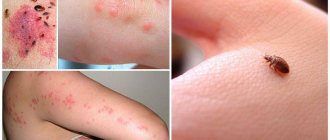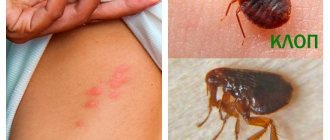Mosquitoes live on every continent of the world except Antarctica. These blood-sucking animals are carriers of various serious diseases - malaria, Zika virus, Dengue fever and others. They all have one thing in common - they are transmitted through blood. In this regard, a completely logical question arises: Is it possible to get AIDS from a mosquito? Despite the fact that during the period of laying eggs, female mosquitoes need to feed on the blood of people and animals, they are not carriers of the disease. It is impossible to become infected after a mosquito bite, even if it drank the blood of a virus carrier.
Why can't mosquitoes carry HIV?
Few animals on Earth inspire as much antipathy as mosquitoes. Their itchy, irritating bites and almost ubiquitous presence can ruin your summer vacation. They have the uncanny ability to sense our sinister intentions to eliminate them, fly away and disappear milliseconds before the killing blow. And their continuous, squeaky sound can awaken the deepest sleepers.
In addition, mosquitoes are carriers of many notorious infections, such as malaria, dengue fever, Zika and Chikungunya viruses. It is estimated that mosquitoes transmit a disease to more than 700 million people each year, leading to many deaths. These disease outbreaks are most often observed in Africa, Asia, and Central and South America [1]. As a result, these bloodthirsty insects kill more people per year than any other animal. Fangs and claws lose to the small, squeaky bloodsucker.
A typical dipteran representative of the blood-sucking mosquito family (Culicidae) at breakfast
Fortunately for humans, HIV is not carried or spread by mosquitoes, otherwise we would be witnessing the most terrible apocalyptic nightmare, rivaling the fantasy of Hollywood directors. This phenomenon is explained by several reasons.
1. The structure of the mouthparts of mosquitoes.
Professor Wayne Krans of Rutgers University, New Jersey aptly noted that “mosquitoes are not flying hypodermic needles.” The type of structure of their oral apparatus is piercing-sucking. A mosquito's "proboscis," the needle-like part, is actually made up of six mouthparts. Four of them are used as stilettos to pierce the skin of a person or animal that is bitten by a mosquito. The other two parts resemble two channels that do not communicate with each other. Through the canal of the upper lip, food is carried out, and the elongated hypopharynx (lower canal) is responsible for the introduction of saliva into the puncture. This two-channel system, due to the isolation of each part, is one of the reasons why mosquitoes cannot transmit HIV [2].
2. The HIV virus dies in the mosquito's intestines.
HIV is unable to multiply in the mosquito's intestines and is therefore destroyed. In humans, HIV infects CD4+ cells and begins to replicate in them. There are no cells with such a marker in the mosquito intestine, that is, there is no substrate, so the virus cannot continue its life cycle or migrate to the salivary glands. Thus, HIV particles are digested by mosquitoes along with the “bloody food” itself and the virus is completely killed [3].
3. Insufficient concentration of HIV in human blood.
For mosquito-borne viral diseases to be transmitted from person to person, the infectious agent must circulate in the host's blood at a sufficiently high level. HIV is contained in a person’s blood in a much lower concentration than is necessary to create a new infection in the conditions of a bite. If a mosquito injects HIV-positive blood into a person (although this is impossible for reasons 1 and 2), then it would take ten million mosquito bites to transmit one unit of HIV. By comparison, people infected with HIV typically carry no more than ten units of HIV. Accidentally swallowing or squashing a mosquito also cannot lead to HIV infection. In these situations, the mosquito still does not contain enough HIV-positive blood to cause a new infection [4].
HIV transmission can only occur if four specific conditions are met. If any of them are not met, the probability of infection is considered extremely insignificant and close to zero:
- The virus must be present in a body fluid in which it can replicate (blood, semen, pre-ejaculate, vaginal, cervical and rectal secretions, breast milk). This does not occur in tear fluid, cerebrospinal fluid, saliva, urine, sputum, sweat and feces;
- There must be a route through which HIV can easily enter the body through damaged mucous membranes or by direct entry into the bloodstream. It is extremely sensitive to external influences;
- HIV is tropic for the CD4+ cell receptor, which explains its ability to infect cells bearing this receptor. The virus must be able to reach such CD4+ cells in the body - this requires deep damage to the skin and/or absorption of the virus through the mucous membranes. HIV cannot pass through intact skin, and the skin itself does not contain susceptible cells. Similarly, in the gastrointestinal tract and respiratory tract the number of such cells is extremely small (plus the low concentration of the virus in sputum, urine and feces), so airborne and fecal-oral transmission mechanisms do not occur;
- A sufficient number of HIV particles is required. For example, the lower the viral load of a particular patient, the lower the risk of infection. An HIV-infected person is most dangerous at the late stage of incubation and during primary clinical symptoms [5].
Since mosquito bites do not meet any of these conditions, transmission of HIV through this route is considered impossible.
Bibliography:
- Watkins J., Baulch E. Identifying Grassroots Opportunities and Barriers to mHealth Design for HIV/AIDS Using a Communicative Ecologies Framework. 2022. In: Baulch E, Watkins J, Tariq A, editors. mHealth Innovation in Asia: Grassroots Challenges and Practical Interventions [Internet]. Dordrecht: Springer; 2022. Chapter 5. Available from https://www.ncbi.nlm.nih.gov/books/NBK543538/.
- Kikuchi K., Stremler M.A., Chatterjee S., Lee W.K., Mochizuki O., Socha J.J. Burst mode pumping: A new mechanism of drinking in mosquitoes. Sci Rep. 2018;8(1):4885.
- Pingen M., Bryden SR, Pondeville E., Schnettler E., Kohl A., Merits A., Fazakerley JK, Graham GJ, McKimmie CS Host Inflammatory Response to Mosquito Bites Enhances the Severity of Arbovirus Infection. Immunity. 2016 Jun 21;44(6):1455-69.
- Abdool Karim SS. HIV-1 Epidemic Control - Insights from Test-and-Treat Trials. N Engl J Med.(2019);381(3):286-288.
- Day T., Mideo N., Alizon S. Why is HIV not vector-borne? Evol Appl. (2008);1(1):17-27.
- https://www.bbc.com/news/health-48464510
What diseases do bloodsuckers infect?
In the tropics, after being bitten by parasites, a huge number of people die from the infections they carry. Blood-sucking insects lead to severe damage to internal organs, paralysis, and death. Not all infections that tropical mosquitoes infect people have been treated with effective medications.
Mosquitoes carry the following diseases:
- Malaria. It is spread by female malaria mosquitoes, which are found not only in the tropics, but also in the south of Russia.
- Yellow fever. The disease is carried by mosquitoes living in Africa and Central America. No special therapeutic drugs have been developed against it yet. In severe cases, yellow fever causes the death of the patient.
Bloodsuckers also infect people:
- dengue fever;
- Japanese encephalitis;
- chikungunya.
People vacationing in tropical countries need to be careful: use mosquito repellents and seek medical help at the first symptoms of the disease. If the illness appeared after returning to Russia, then it is necessary to warn doctors about vacationing in the tropics.
Anonymous HIV test
According to clause 2, article 8 of the Federal Law of the Russian Federation No. 38-FZ, a patient can anonymously take an HIV test and receive the result using an individual order number, which is not subject to disclosure. For those who for some reason are unable to come for examination to one of the departments of the Hemotest Laboratory, we recommend using the service of a nurse visiting to draw blood and then registering the sample taken as an anonymous order. Please note: the results of anonymous tests for AIDS (HIV) cannot be used for professional examinations, hospitalization or provision to the attending physician in a clinic. The results of an HIV test, regardless of their outcome, are issued only if the patient personally contacts the laboratory department. When examining minors (under 14 years of age) - to the legal representative specified in the order.
Results are issued upon presentation of a contract, estimate and identification document of the patient himself or the patient’s representative specified in the order.
Research results are not communicated by phone or email. IF AN HIV TEST IS PRESCRIBED FOR THE PURPOSES OF PREPARATION FOR HOSPITALIZATION OR FOR PROVISION IN A HEALTHCARE FACILITY, REGISTRATION OF APPLICATIONS FOR IT IS CARRIED OUT subject to the mandatory provision by the patient of the following data:
1) For residents of Moscow and the Moscow region
- Full Name
- Day, month and year of birth
- Registration Information
- Passport
2) For residents of other regions of the Russian Federation and foreign citizens, additionally - a photocopy (scan) of the passport.
- Full Name
- Day, month and year of birth
- Registration Information
- Photocopy (scan) of passport
Possibility of hepatitis infection
Diseases transmitted by mosquitoes are similar in symptoms to viral hepatitis, which affects liver cells and leads to liver atrophy. The disease is transmitted through blood, less often through sexual contact; hepatitis A is transmitted through dirty hands or contaminated products. Harm from mosquito bites is not associated with the spread of the virus. The patient experiences more severe allergy symptoms after an insect attack due to a weakened immune system.
How dangerous mosquito bites are depends on what part of the world you are analyzing. In total, there are more than 3 thousand varieties of these insects, the most dangerous ones live in the tropics and jungles with a hot, humid climate. Bloodsuckers do not transmit hepatitis or AIDS.
Why are mosquitoes dangerous?
More than 100 species and subspecies of blood-sucking mosquitoes belonging to 8 genera live in Russia: Anopheles, Culiseta, Aedes, Culex, Coquillettidia, Orthopodomyia, Uranotaenia, Toxorhynchites.
Representatives of the genera Anopheles, Culiseta, Aedes, Culex and Coquillettidia are of epidemiological importance. Transmission of infection by mosquitoes occurs through a bite, that is, through transmission.
In our country, mosquitoes can cause infection with tularemia and, potentially, anthrax, Plasmodium malaria and arboviruses belonging to the families Togaviridae, Bunyaviridae and Flaviviridae, as well as nematodes that cause dirofilariasis.
“Diseases endemic to Russia and transmitted by mosquitoes: tularemia, dirofilariasis, West Nile fever (WNV), fevers caused by viruses of the Californian encephalitis group (Inco fever, Tyagin fever, Khatanga fever), Bataille fever, Sindbis fever, Karelian fever, fever Semliki forests,” Rospotrebnadzor reported.
Infections that are not endemic to Russia can be brought into the country by sick people, sick animals or infected vectors that can travel long distances by sea, air, rail and road transport.
The danger of mosquito bites
In Russia, cases of dengue or malaria are rare. The only danger mosquito bites pose is allergic reactions. They are caused by insect saliva, which contains substances that prevent blood clotting.
For most people, mosquito bites cause itching and small swelling. In babies under one year of age and in people with a strong tendency to allergies, blisters form, accompanied by itching and fever. In severe cases, anaphylactic shock is possible.
It is impossible to contract AIDS through a mosquito bite. If the parasite sucks the blood of a sick person, the virus will die in his stomach. Even if a person kills a mosquito with his bare hand, he is not in danger of getting sick.
Features of HIV infection
Acquired immunodeficiency syndrome is a very complex and insidious disease. Even after contracting HIV, a person may not get sick for several years, but years later, the disease makes itself felt.
In this case, the patient develops new infections against the background of weakened immunity. As a result, AIDS can lead to irreversible processes, deadly illnesses and even oncology.
The immunodeficiency virus itself, once released into the external environment, is soon deactivated and completely dies.
Carrying out a blood test
High temperatures, severe frost, and disinfectants can kill it. In a drop of blood that is placed in a test tube, the virus lives for a couple of days.
The source of transmission of infection is only humans. In patients, the HIV virus is contained not only in the blood, but also in semen and other internal secretion fluids, including breast milk. Infection occurs precisely through contact with hazardous substances. At the same time, the virus lingers in other biological components, but not for long.
The disease triumphs in the new body if a dangerous infection gets directly onto mucous membranes, open wounds or into the bloodstream. It is impossible to get sick in any other way.
dispelling myths about the modes of transmission of AIDS
That is why it is not forbidden to shake hands and even kiss someone with AIDS.
Methods of infection
You should not think that AIDS is a legend created to frighten young people and aimed at ensuring that boys and girls lead a healthy lifestyle.
HIV is a real threat to humanity. You can protect yourself from it not only by arming yourself with knowledge, but also by getting used to taking the necessary precautions.
You should refrain from unprotected sex with unfamiliar partners. Today, according to medical statistics, 40% of AIDS cases are contracted this way.
Your future may depend on this choice
At the same time, women are at greater risk of infection than men due to the physiological characteristics of the body.
Infection can occur from a sick mother to her baby during childbirth or during breastfeeding.
Transmission of the disease from mother to baby
This route of transmission of the disease is possible only if the pregnant woman was not registered at the antenatal clinic or refused to carry out the necessary procedures while carrying the child. If you do everything to prevent it from becoming infected, in 99% of cases the baby is born healthy.
A drug addict's needle - this is how several people become infected when using syringes at the same time.
Infection through a syringe
However, in the modern world, when injection drugs have ceased to be relevant, and they have been replaced by “salts” and other synthetic substances, the route of transmission of AIDS through a drug addict’s needle is less and less identified by doctors.
Above are the main 3 types of transmission of this terrible disease. But there are a number of other important points that should be taken into account when protecting yourself from danger:
- Blood transfusion not under proper conditions.
- Carrying out operations in dubious clinics.
- Through contaminated instruments in nail and tattoo parlors.
You should not trust your health and life to dubious clinics and doctors. It is important to remember safety precautions.











